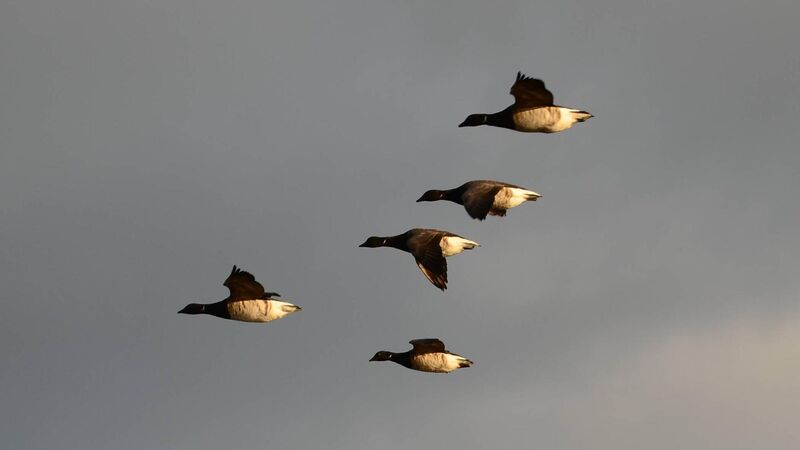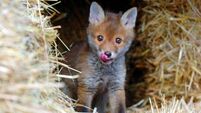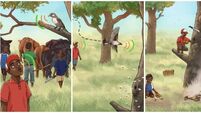Richard Collins: How do brent geese choose a leader to follow?

Brent geese travel in groups which include family parties. Picture: iStock
Brent geese will be leaving us shortly, pairs and their youngsters joining flocks to travel to Arctic Canada. Migration routes may be ‘hardwired’ into the brains of cuckoos, but young brent have to be shown where to go.
How are flock leaders chosen; are brent geese autocrats oligarchs or democrats? Who calls the shots even within families? We simply don’t know.
Juvenile geese are easy to spot; the white tips of their wing coverts merge into pale parallel lines when the wings are closed. Telling the sexes apart is more difficult but approach a family party, which you shouldn’t, and the male will be the first goose to raise its head. Security and defence are his responsibility; he keeps an eye out for intruders.
It’s decision time now for brent; when to depart, which flock to join etc? The first leg of this, the longest journey made by any species of goose, will be to Iceland, 800km away. There are dangers from the start. Weather conditions, for example, may deteriorate en route. If they do, should the birds carry on regardless, or land on the sea to ride out the storm?
After rest and recreation in Iceland, the geese will take to the wing again. Having crossed the Denmark Strait to Greenland, should they veer southwards to round Cape Farewell, or take a shortcut across the great ice mass to the Davis Strait? Then, a formidable avian version of the notorious North West Passage lies ahead.
Brent geese are not easy to study during their breeding season in the high Arctic. Adults and juveniles can be rounded up during their flightless period, but doing so is difficult and expensive.
Recent research on another migrating species, however, offers some useful insights. Patrick Byholm and colleagues at Helsinki University have studied the migration of Caspian terns. These fish-eating seabirds nest on the coasts of Sweden Finland and Estonia. There have been sightings of the species in Irish waters, but you are most unlikely to encounter a Caspian here.
Like brent geese, these terns migrate in spring and autumn. Adult Caspians and their chicks can be ringed relatively easily at their Baltic breeding colonies. Byholm and his team fitted GPS tags to 31 birds and tracked their movements to and from Africa. The results showed that, during the journey south, "young birds stayed close to an adult at all times" and that "solo migrating adults travelled faster than did adults accompanying young".
Four birds that lost contact with their parents all died. Most significantly; "during their first solo migration, sub-adult terns remained faithful to routes they took with their parents as young" and used the same stopover sites.
Surprisingly, fathers made most of the family decisions. Nine young terns migrated with the father while only one chose to go with the mother. ‘When the old cock crows’, it seems,’ the young cock learns.’ Brent geese, like terns, travel in groups which include family parties. The approaches of the two species differ in their details, but preparing youngsters to face the perils and pitfalls of migration is common to both.
- Patrik Byholm et al. Paternal transmission of migration knowledge in a long-distance bird migrant. . 2022






